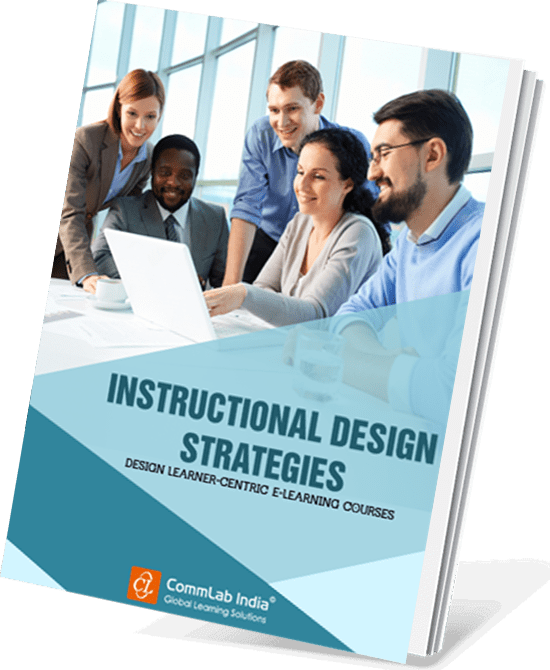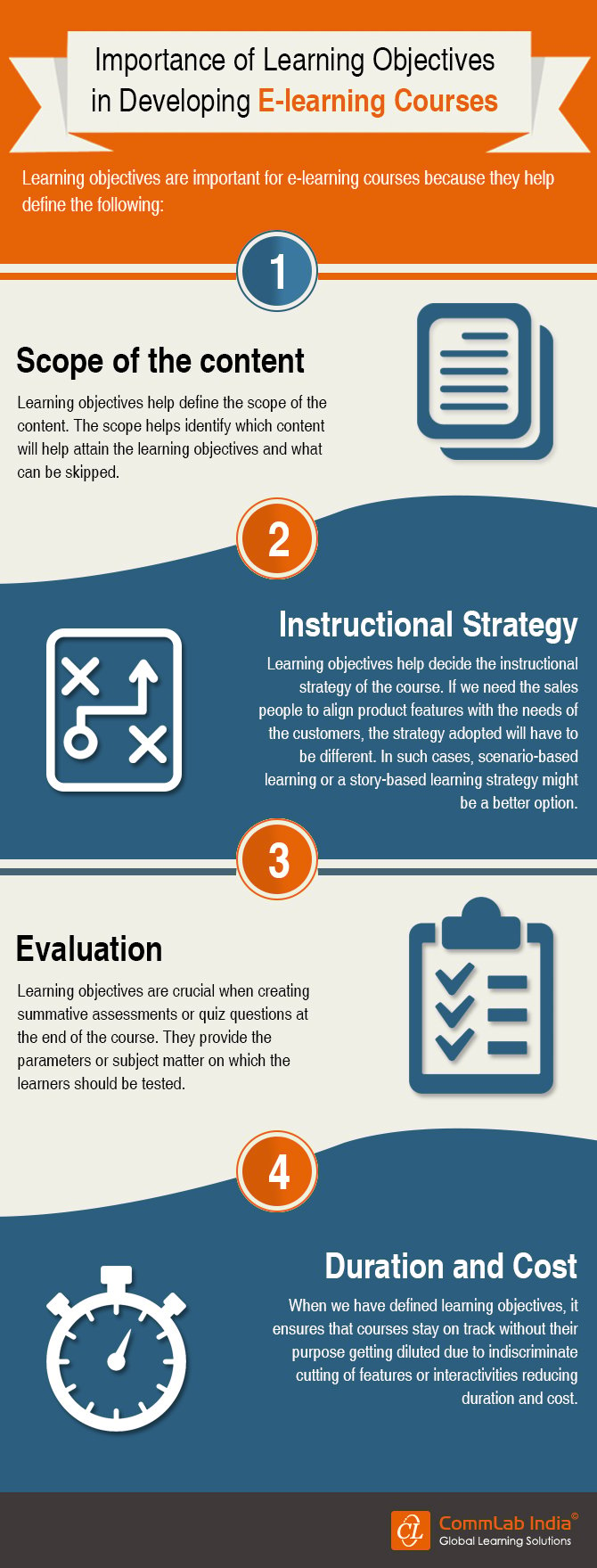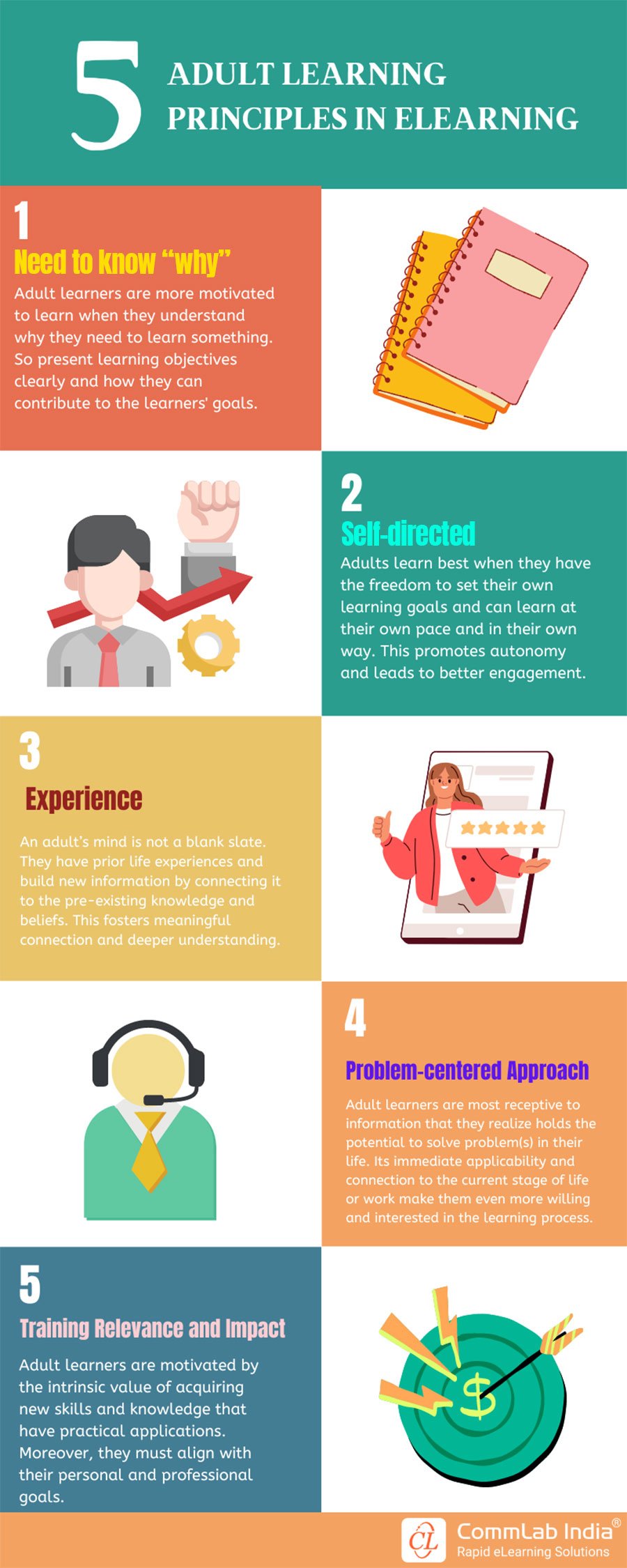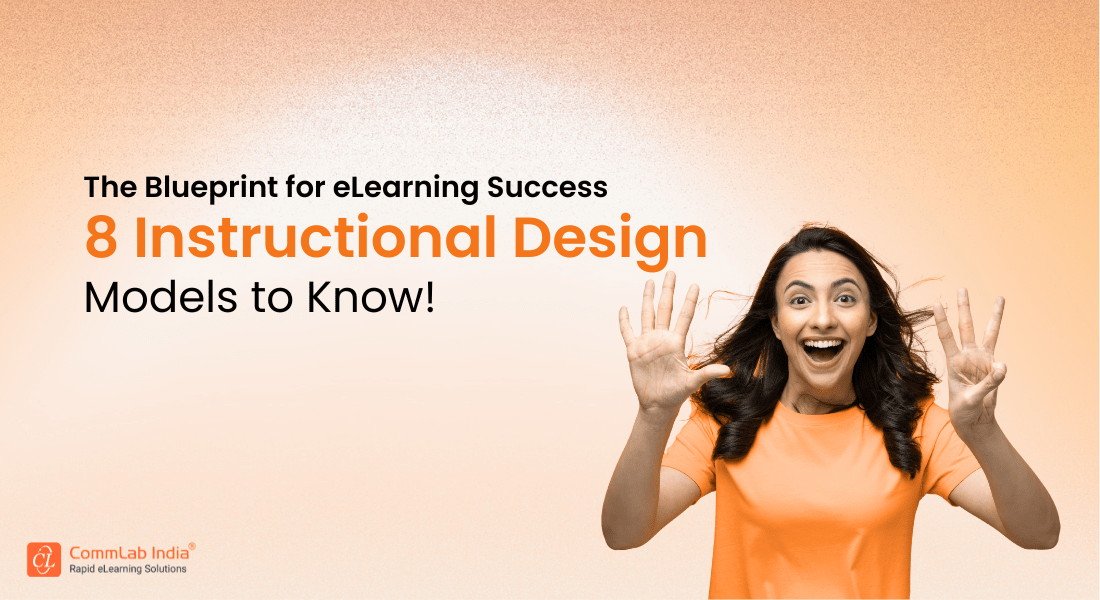Mastering eLearning — Top Instructional Design Skills You Need!

In today's fast-paced corporate world, effective eLearning courses are key to successful employee training and development. Companies aiming for growth and adaptability need to offer training that's accessible, engaging, and efficient. Whether it's onboarding, sales training, or compliance, eLearning provides a flexible way to share knowledge and skills no matter where or when. To really make the most of eLearning in corporate training, how these courses are designed is crucial to keep them engaging and impactful.
This is where the expertise of Instructional Designers (IDs) comes into play. Armed with essential instructional design skills, they craft courses that are not only informative but also interactive and aligned with organizational goals. From selecting the right content delivery methods to ensuring the learner experience is seamless, instructional designers are the masterminds behind building eLearning solutions that drive measurable success in corporate training
→ Download Now: Instructional Design Strategies to Design Engaging eLearning Courses
Table of Content
- What is the Importance of Effective Instructional Design in eLearning?
- What Are the Essential ID Skills for Creating Effective eLearning?
- How Can IDs Continuously Learn and Ace?
- What are the Best Practices Every ID Must Master?
What is the Importance of Effective Instructional Design in eLearning?
Effective instructional design is at the heart of impactful eLearning, transforming digital content into engaging, learner-centric experiences. With eLearning becoming a cornerstone of modern training programs, instructional design ensures that courses are not just informative but also interactive, relevant, and results-driven.
A well-crafted instructional design framework addresses the diverse needs of learners, ensuring content is accessible, structured, and tailored to their learning objectives. By leveraging techniques like chunking information, scenario-based learning, and assessments, it helps learners grasp and retain knowledge more effectively. Furthermore, it integrates principles of engagement, such as multimedia elements, gamification, and real-world simulations, to keep learners motivated and invested in their journey.
In the ever-evolving landscape of online learning, effective instructional design also prioritizes scalability and adaptability. Courses can be updated and reused, making them cost-efficient while staying aligned with organizational goals. Ultimately, instructional design in eLearning goes beyond delivering knowledge—it creates experiences that empower learners to apply what they’ve learned in meaningful ways, driving personal and professional growth.
What Are the Essential Instructional Design Skills for Creating Effective eLearning?
Designing eLearning requires a unique blend of technical, creative, and strategic skills to create courses that are both engaging and effective. Here are the key instructional design skills essential for crafting impactful eLearning experiences:
1. Learner and Organizational Needs Analysis
The ability to conduct learner and organizational needs analysis is a cornerstone skill for instructional designers creating eLearning programs. It ensures the course content is relevant, engaging, and aligned with strategic goals. A robust learner analysis involves profiling the learners to understand their demographics, skill levels, learning preferences, and motivations while identifying any gaps that the training must address. On the organizational side, designers must evaluate business objectives, performance challenges, and operational priorities to ensure the eLearning program delivers measurable impact. This dual focus ensures that the training resonates with learners while driving organizational success.
Here is an infographic that illustrates the significance of learning objectives in creating eLearning courses.
2. Learning Theory and Application
A strong grasp of learning theories, particularly adult learning principles, is essential for designing eLearning experiences that resonate with adult learners. Adult learning, or andragogy, emphasizes that adults learn differently than children, focusing on self-direction, relevance, and practical application. Key principles include leveraging learners’ prior knowledge and experiences, ensuring the content is immediately applicable to real-world scenarios, and fostering active participation in the learning process.
By integrating these principles with established learning theories like constructivism and cognitive load theory, instructional designers can create eLearning that promotes engagement and retention. Techniques such as scaffolding, which builds on existing knowledge step-by-step, and spaced learning, which reinforces key concepts over time, align well with how adults prefer to learn. Additionally, providing opportunities for self-paced exploration, problem-solving, and reflection enhances the learning experience, making it both impactful and memorable.
Discover 5 essential adult learning principles in this infographic.
3. Storyboarding and Visual Design
Storyboarding is a critical skill for instructional designers, serving as the blueprint for eLearning courses. It translates content into a visual and structural framework, mapping out course flow, multimedia elements, and interactions. Effective storyboards include key elements to ensure clarity, engagement, and alignment with learning objectives.
- Title and Objectives: Each slide or section should start with a clear title and outline the learning objective it addresses, helping maintain focus and purpose.
- Audio Scripts: Detailed narration or audio instructions should accompany the storyboard, specifying tone, pacing, and placement to enhance understanding and engagement.
- On-Screen Text: Concise and impactful text should be planned, avoiding information overload. Text should complement visuals rather than repeat audio narration.
- Interactive Instructions: Detailed descriptions of interactive elements, such as click-and-reveal hotspots, quizzes, or drag-and-drop activities, help developers bring the storyboard to life.
- Visuals and Multimedia: Placeholder or suggested imagery, videos, or animations should align with the content and support the learning objectives.
Harness the power of ChatGPT to elevate instructional design skills. Watch the video!
4. Interactivity and Engagement Design
Interactivity is at the heart of engaging eLearning experiences. A core instructional design skill is to have the creativity to conceptualize and the technical expertise to implement elements like quizzes, simulations, branching scenarios, and gamified activities. These interactive components go beyond passive learning, encouraging active participation and decision-making. For example, branching scenarios immerse learners in real-world situations, allowing them to explore consequences and make choices in a risk-free environment. Similarly, simulations enable hands-on practice, bridging the gap between theory and application. Designing such interactions requires a deep understanding of the learners, clear instructional goals, and the ability to use eLearning tools effectively to bring concepts to life.
Unveil winning tips to enhance eLearning with multimedia and interactivities.
5. Communication and Collaboration
Effective instructional design is rarely a solo effort—it involves working closely with Subject Matter Experts (SMEs), developers, project managers, and other stakeholders. Strong communication skills are essential for gathering accurate content from SMEs, negotiating timelines with project managers, and aligning course designs with stakeholder expectations. Collaboration is further enhanced by active listening, which ensures all input is understood and considered. Additionally, instructional designers must navigate feedback loops, integrating constructive suggestions while maintaining the integrity of the learning objectives. Clear, consistent communication fosters a shared vision, ensuring the final eLearning product meets both learner and organizational needs.
6. Evaluation and Improvement
Continuous evaluation is critical to the success of any eLearning program. Instructional designers must be skilled in collecting and analyzing data from learner feedback, assessments, and performance metrics. Tools like surveys, focus groups, and Learning Management System (LMS) analytics help identify areas for improvement. For instance, high dropout rates or poor assessment scores might indicate overly complex content or insufficient engagement. Designers then iterate on the course, refining elements like navigation, interactivity, or content clarity to better meet learner and organizational goals. This commitment to improvement ensures that the eLearning program remains effective and relevant over time.
7. Technology Proficiency
Technology proficiency is crucial for instructional designers, involving knowledge of eLearning authoring tools and Learning Management Systems (LMS). Designers need to optimize eLearning courses for LMS publishing, ensuring accessibility, progress tracking, and data evaluation. Emerging technologies like AR, VR, and AI are becoming increasingly valuable in this field.

Instructional Design Strategies to Design Engaging eLearning Courses
Design Learner-Centric eLearning
- Importance of ID Strategies in eLearning
- Parameters to Select the Right ID Strategy
- ID Strategies for Effective Results
- Case Studies
Read more to Learn How Technology is Impacting the Evolution of Instructional Design.
Artificial Intelligence (AI) is reshaping how instructional designers approach eLearning course design by automating and personalizing content creation. Generative AI tools can assist in framing learning objectives and crafting content by analyzing employee data to identify specific learning needs and preferences. This allows designers to create content that adapts in real-time, enhancing alignment with learning objectives.
For multimedia integration, AI-powered tools can suggest the most engaging formats, such as videos or interactive modules, specifically tailored to match the learner's preferred style. Generative AI tools further streamline the process by simplifying multimedia and assessment creation, allowing instructional designers to focus on crafting effective and personalized learning experiences. This makes instructional design not only more efficient but also more dynamic and adaptable to changing learner needs.
Additionally, immersive learning technologies such as AI, AR, and VR are pushing the boundaries further. AI offers personalized learning paths, while AR and VR create immersive training environments. Instructional designers must continually update their instructional design skills to leverage these advancements, ensuring their designs stay relevant and engaging.
Overall, technology has expanded the scope of instructional design, making it more interactive, learner-focused, and data-driven. Staying current with these innovations is essential for instructional designers to implement AI-powered instructional design.
A Priceless Skill — Adaptability and Lifelong Learning
The world of eLearning evolves rapidly, driven by advances in technology and changes in learner expectations. Instructional designers must embrace adaptability, staying current with microlearning solutions, mobile-first design, and the use of AI in personalized learning. Lifelong learning is not just a principle they teach—it’s a mindset they practice. Designers continuously upskill by exploring new authoring tools, experimenting with emerging technologies like augmented reality, and attending industry webinars or conferences. This commitment to growth enables them to create cutting-edge eLearning experiences that meet the ever-changing demands of modern learners and organizations.
How Can IDs Continuously Learn and Ace?
In today's fast-evolving business landscape, instructional designers must keep up with changing training needs. Lifelong learning is key. Embracing curiosity and adapting to industry changes will help create impactful learning experiences and support organizational success.
Here’s how instructional designers can prepare for the ongoing changes in corporate training:
1. Continuous Upskilling and reskilling
The field of instructional design is dynamic. Staying updated through ongoing learning is crucial.
Actions:
- Take online courses on instructional design, eLearning, or adult learning via platforms like Coursera, Udemy, or LinkedIn Learning.
- Engage with content on modern learning methods, learning analytics, UX design, or multimedia.
- Evaluate your work regularly and adjust based on feedback.
2. Engaging in Conferences and Workshops
These events offer insights into industry trends and networking.
Actions:
- Attend conferences like ATD to participate in discussions and workshops.
- Join social media ID or eLearning groups to connect with peers and experts.
3. Collaborating with Subject Matter Experts (SMEs)
SMEs offer essential knowledge for effective design.
Actions:
- Work with SMEs during content creation to gain insights.
- Conduct interviews or surveys for deeper understanding.
- Obtain regular feedback from SMEs to ensure accuracy.
4. Keeping Up with Tools and Technologies
Technology drives instructional design. Familiarity with tools is vital.
Actions:
- Learn about latest AI/Generative AI tools and stay updated.
- Understand LMS and LXP functions.
- Explore technologies like VR, AR, and interactive videos for learning impact.
- Study UX principles to enhance learner interfaces.

Instructional Design Strategies to Design Engaging eLearning Courses
Design Learner-Centric eLearning
- Importance of ID Strategies in eLearning
- Parameters to Select the Right ID Strategy
- ID Strategies for Effective Results
- Case Studies
What are the Best Practices Every ID Must Master?
Mastering key practices is crucial to developing impactful and effective learning experiences. To stay ahead, it's vital to focus on top practices that can significantly improve your instructional design competency. Be sure to watch this video below that delves deeper into these top practices, offering actionable insights and expert advice to help you elevate your instructional design skills.
Wrapping up!
From creating interactive modules to ensuring content is tailored for diverse learning styles, effective instructional design skills enable instructional designers to craft courses that resonate with learners and meet business objectives. The right blend of creativity, technology, and data-driven strategies makes all the difference in delivering eLearning that sticks and drives performance.
Ready to take your instructional design skills to the next level? Discover proven strategies for designing learner-centric eLearning courses that captivate and inspire. Download our eBook and learn how to design courses that not only engage learners but also drive measurable success in your organization.







